Key takeaways:
- Social media enhances event engagement through behind-the-scenes content, live interactions, and high-quality visuals.
- Different platforms serve unique purposes—Instagram for visuals, Twitter for real-time updates, and Facebook for community building.
- Collaborations with local influencers and user-generated content significantly increase event reach and authenticity.
- Engaging content, such as artist interviews and interactive polls, fosters deeper audience connections and enhances the exhibition experience.
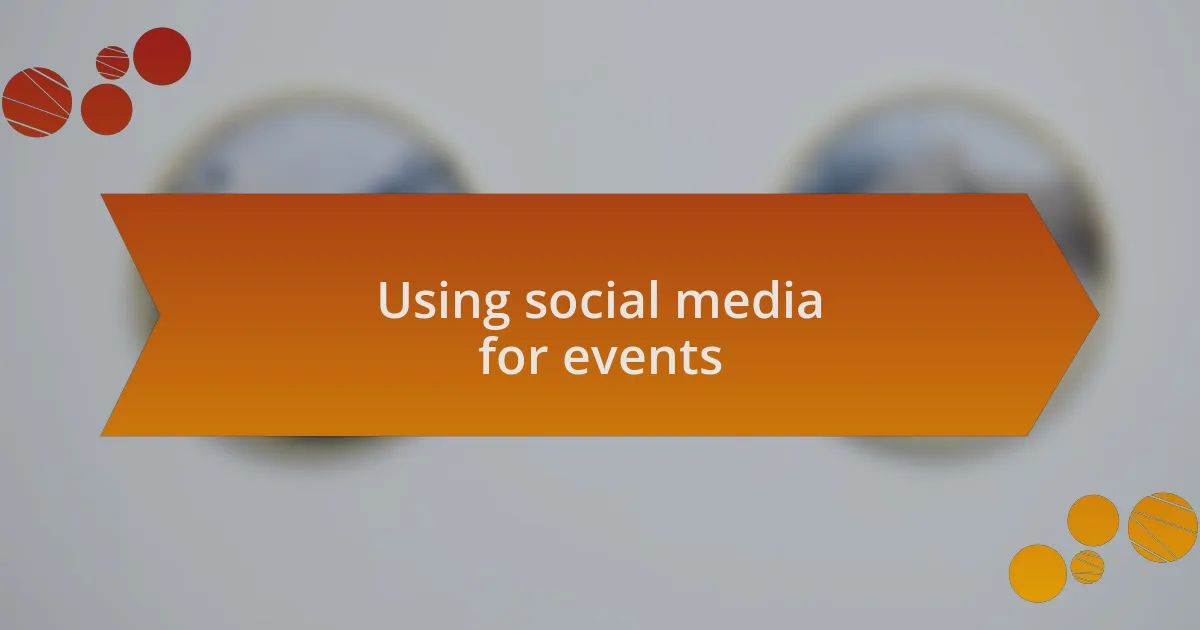
Using social media for events
Social media serves as a powerful platform for driving event engagement, particularly in the vibrant world of art galleries. I remember promoting our last exhibition on Instagram; within just a few days, the buzz grew organically. It made me wonder, what better way to connect with art enthusiasts than by sharing behind-the-scenes glimpses and artist interviews?
One strategy that stood out to me was live streaming sneak peeks of the event preparations. When I went live on Facebook to showcase our setup, the excitement among viewers was palpable. They started asking questions in real-time, creating a dynamic conversation that made them feel part of the experience, and I couldn’t help but feel thrilled by their enthusiasm.
Engaging visually is key for any art-related event. High-quality photos of artwork or even short videos of artists creating pieces can captivate your audience. In one memorable instance, a time-lapse video of an artist painting drew in followers who later became our most enthusiastic attendees. It’s remarkable how such simple content can foster a sense of connection and anticipation.
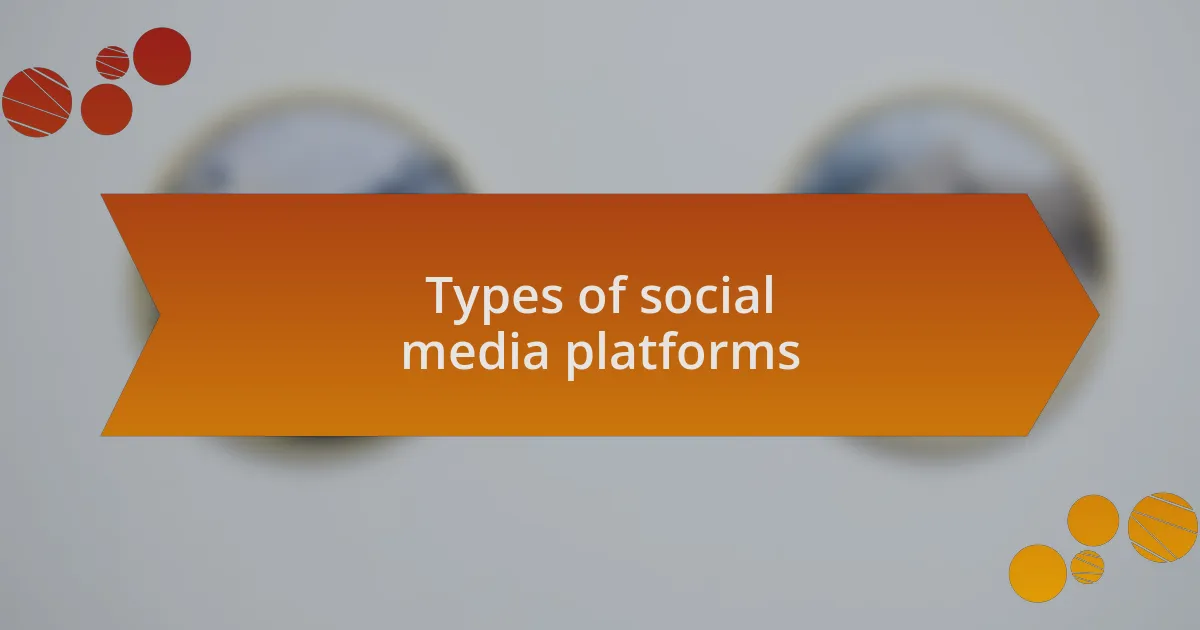
Types of social media platforms
When it comes to social media platforms, each serves a unique purpose and audience. For example, Instagram is all about visuals, making it ideal for art galleries to showcase stunning images of artwork. I remember posting a beautifully curated collage of pieces from our exhibition, which sparked interest and conversations in the comments. It’s fascinating how a single post can evoke such emotions and attract art lovers.
Then there’s Twitter, which thrives on real-time communication and quick updates. I often use it to share snippets of event details or engage with our community through polls. One time, I tweeted a question about which artist attendees were most excited to see; the responses were lively and gave me valuable insights into our audience’s preferences. This quick interaction made it clear that swift engagement on such platforms can significantly impact event buzz.
Lastly, platforms like Facebook not only allow for event promotion but also the building of community. During one of our exhibitions, I created a dedicated event page where I could share updates, interact with attendees, and even live post during the event. It was rewarding to see guests RSVPing and discussing their excitement, which made me feel like we were all part of a larger art-loving family. How often do we get to turn online connections into real-life enthusiasm?
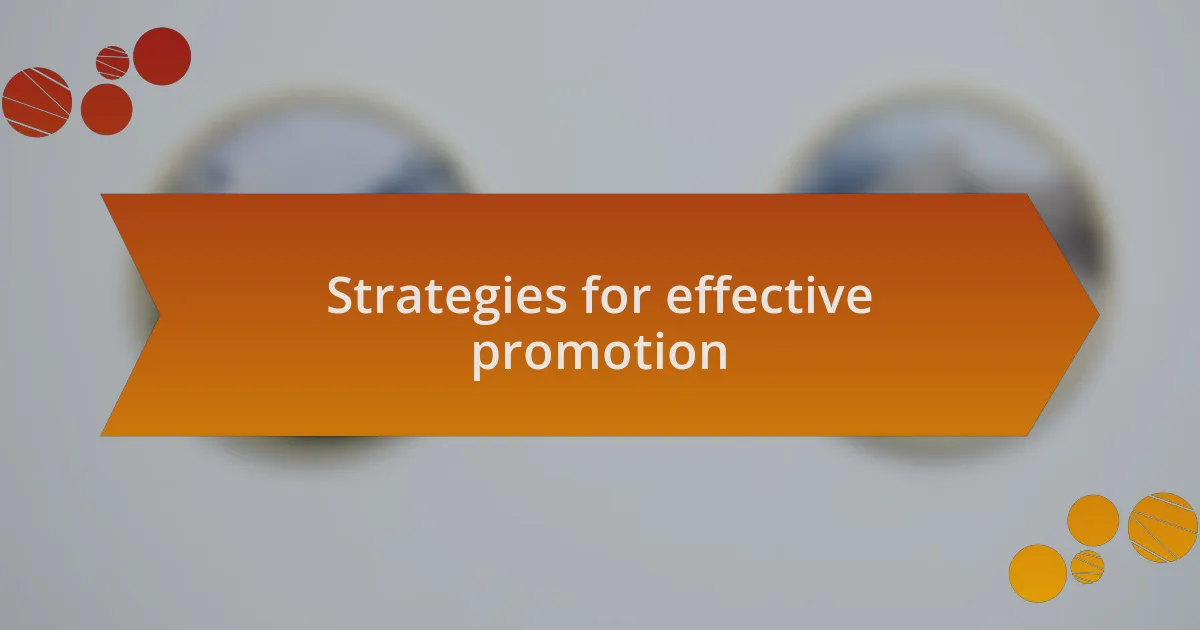
Strategies for effective promotion
One effective strategy for promoting events is leveraging collaborations with local influencers or artists. I recall partnering with a local arts blogger who shared our exhibition details with her followers. It was incredible to witness the influx of new attendees who came purely based on her recommendation, demonstrating how influential voices can amplify your event’s reach.
Another impactful method is creating engaging visual content tailored for each platform. For instance, I once developed short video clips showcasing the setup of our latest exhibit. The behind-the-scenes perspective not only piqued interest but also allowed followers to feel a connection to the art in progress. How compelling is it to feel like you’re part of the journey before the official opening?
Lastly, utilizing user-generated content can significantly enhance engagement. During an event, I encouraged guests to take photos and tag our gallery on social media. I was thrilled when attendees shared their experiences, making our promotion feel authentic and crowd-driven. This approach not only builds community but also immortalizes the event through the diverse perspectives of art lovers. Isn’t it rewarding to see your event celebrated through the eyes of your audience?
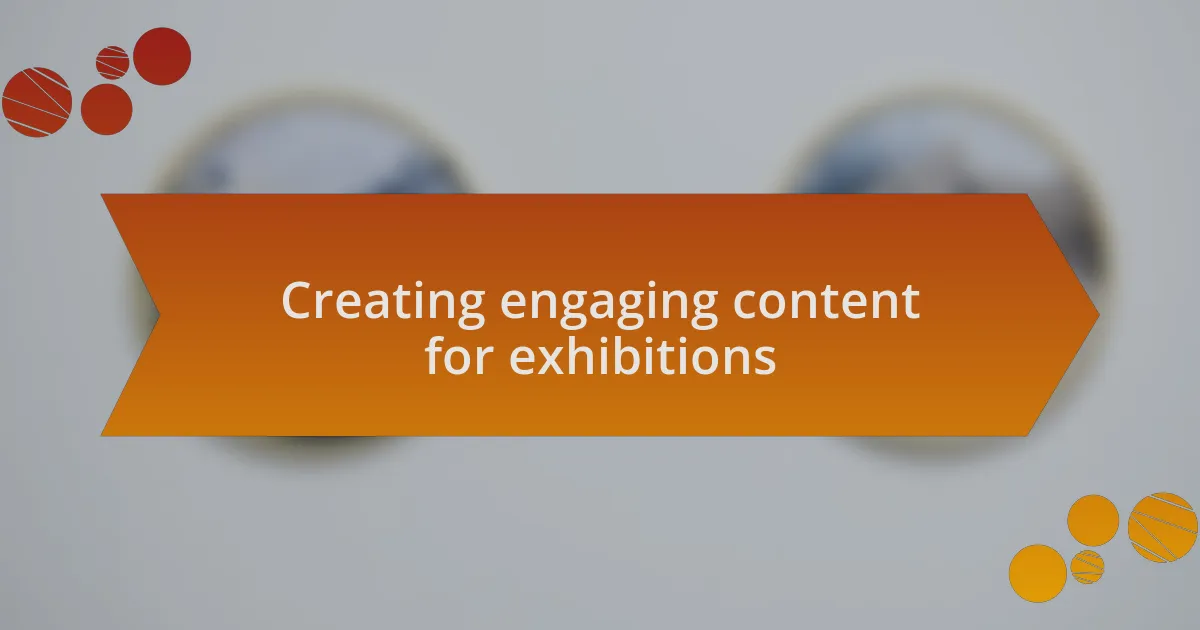
Creating engaging content for exhibitions
Creating engaging content for exhibitions requires a deep understanding of your audience and the artwork itself. I vividly remember an exhibition where I crafted a series of posts that highlighted not only the pieces but also the stories behind them. For example, one post featured an interview with the artist, which brought the art’s emotional depth to life. How often do we overlook the narratives behind the canvas? When you share these stories, you invite your audience into a more personal relationship with the artwork.
Another effective tactic I’ve employed is running interactive polls and quizzes on social media related to the exhibition theme. Once, I posted a fun quiz about the art movements represented in the upcoming exhibit. I was surprised at how much engagement this generated, with people sharing their results and sparking conversations. It seems that blending education with entertainment can draw people in, don’t you think? I found that this not only increased curiosity but also made attendees more invested in the experience.
Additionally, I’ve noticed that immersive content, such as virtual gallery tours or augmented reality experiences, can captivate an audience before they even step foot in the gallery. I once set up a simple AR filter that allowed users to envision art pieces in their own spaces. The excitement it sparked was palpable; people loved visualizing themselves amidst the art. Isn’t it remarkable how technology can bridge the gap between distance and engagement? This type of content enriches the viewer’s experience and keeps the dialogue flowing even after the exhibition closes.
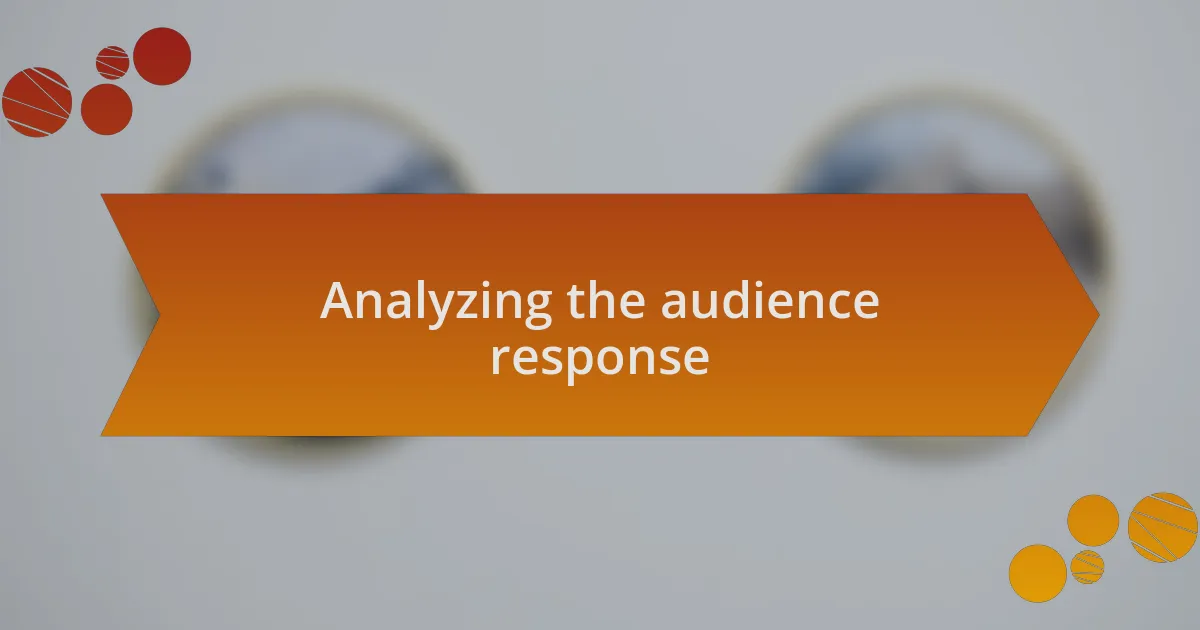
Analyzing the audience response
To truly understand audience response, I’ve turned to analytics tools to glean insights on engagement. For instance, after sharing a behind-the-scenes video from one of our exhibitions, I was astonished to see a significant spike in comments and shares. It was a reminder that people crave authenticity and a glimpse into the creative process. How often do we overlook the power of transparency in our messaging?
Observing comments and messages from followers also provides invaluable feedback. During one exhibit, I noticed a recurring question about an artist’s inspiration, which prompted me to organize a live Q&A session with them. This interaction not only answered queries but deepened the audience’s connection to the artist and the work. Isn’t it fascinating how a simple inquiry can lead to a whole new layer of engagement?
I’ve also learned that sentiment analysis can reveal underlying emotions tied to audience reactions. After posting an emotional piece about the impact of art on mental health, the heartfelt responses poured in. Many shared their personal stories, highlighting how art provided solace or inspiration. This reminded me that at its core, art isn’t just about visuals; it’s about forging connections and evoking feelings. How can we harness these emotional insights to further enhance our community engagement?